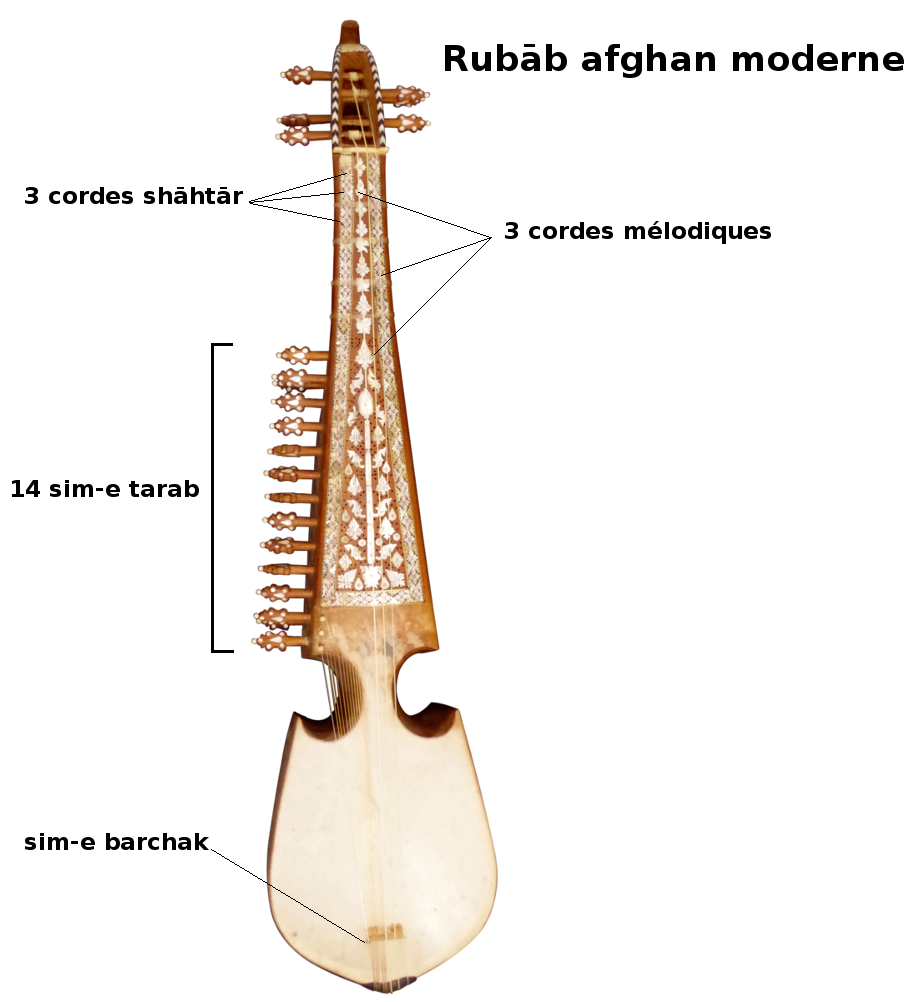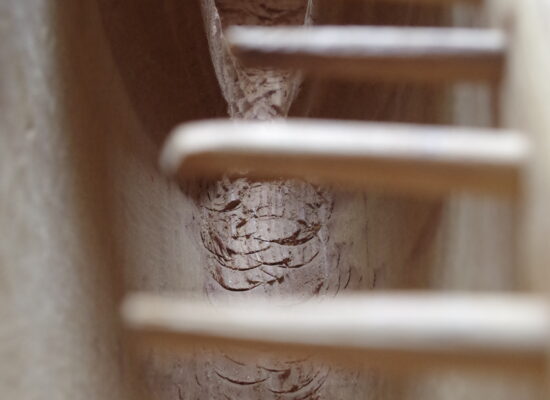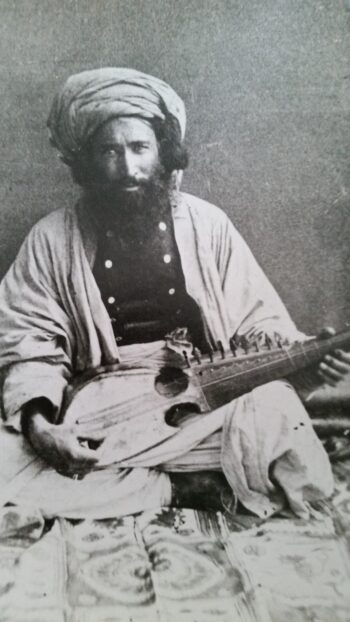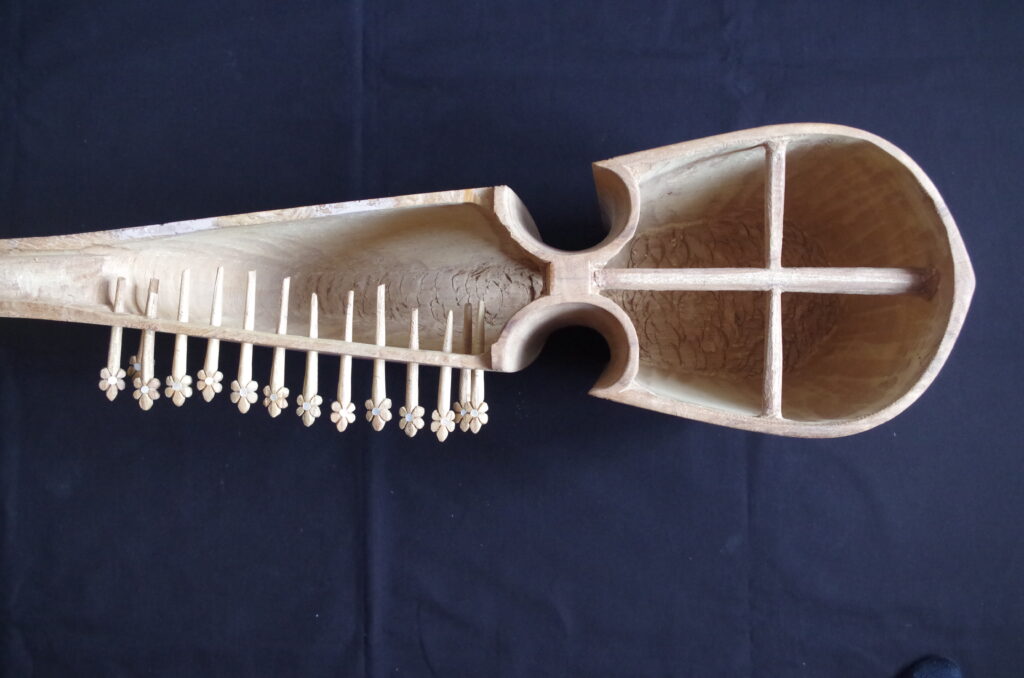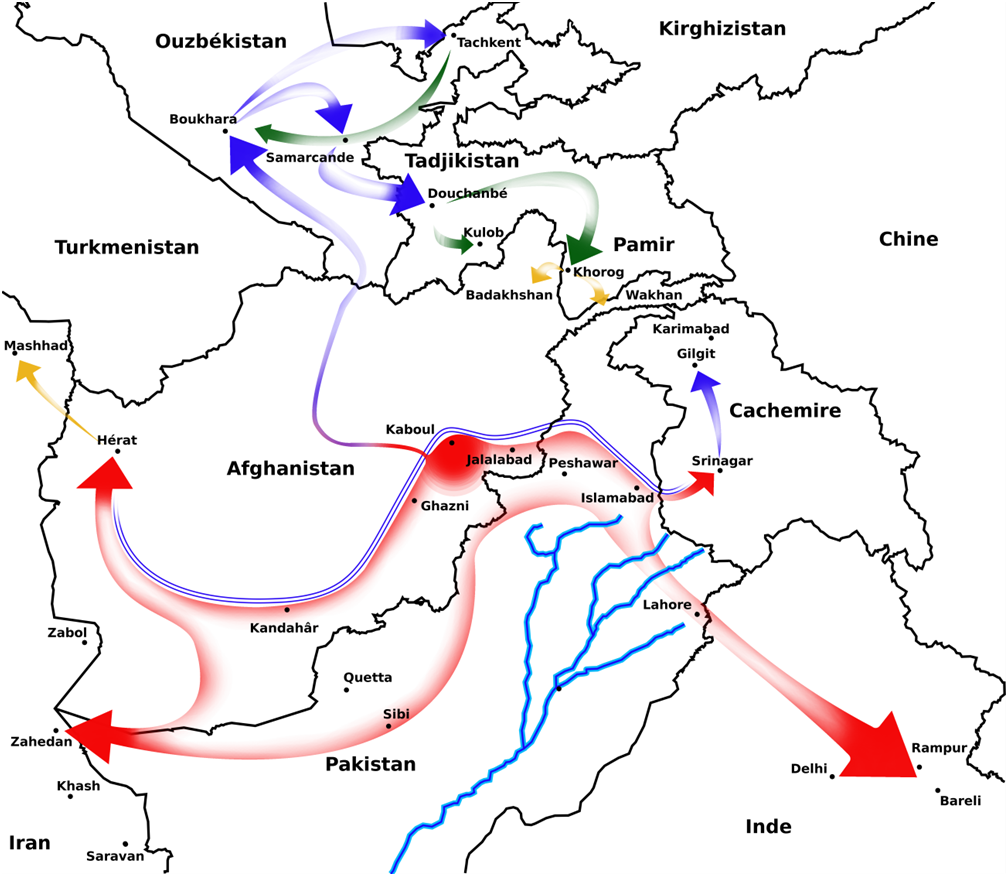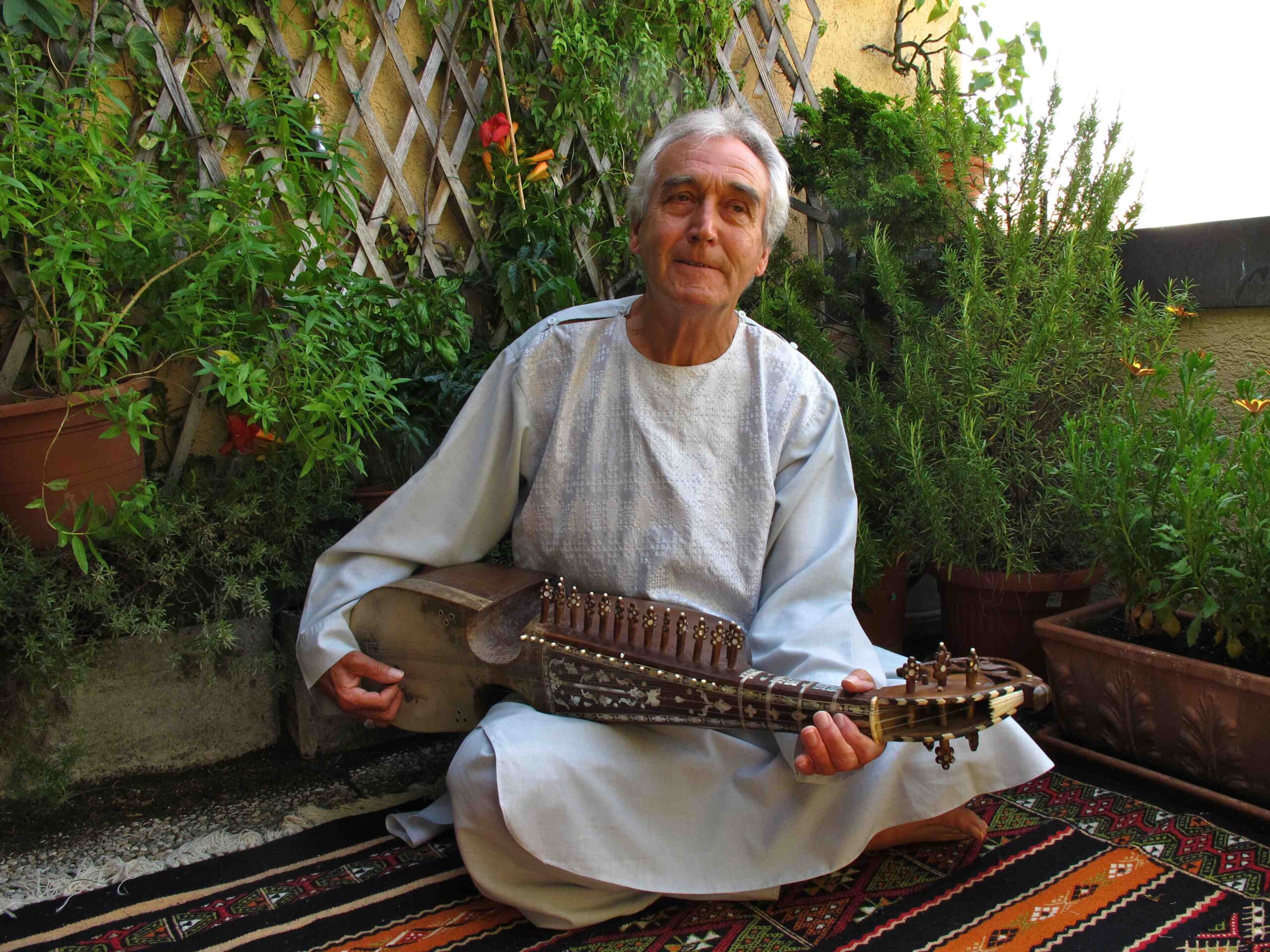
The Afghan Rubāb, a plucked string lute
The Afghan rubāb, as the dutâr or the tanburis one of the most popular Central Asian lutes, and for less than a century now has also been played in the West. Its distinctive timbre captivates listeners and its singular shape, often richly ornamented with bone or mother-of-pearl inlays, makes it a splendid object, appreciated by musicians and collectors alike. Those who play it hold it in high esteem, going so far as to consider it “a friend”, or even “the voice of God”. Since the 8th and the 14th century, the term ‘rubāb’ was used to describe a fiddle. Since then, it has been used to describe a plucked lute.
Diachronic hypothesis of the evolution of the
Afghan Rubāb
This video takes us to the heart of the hypothetical invention of the Afghan rubāb: from the fiddle-like sarinda to the rubāb lute of Bichitr, via the lute/viola chikārā. Immerse yourself in this musical animation and discover how Afghanistan's emblematic instrument is said to have evolved over time.
Find out more about the Afghan Rubāb specialists
John Baily, Afghan Rubāb specialist
John Baily, is an ethnomusicologist and Emeritus professor at Goldsmith’s College London, is a leading expert on Afghan music and the rubāb. His latest book, ‘War, Exile and the Music of Afghanistan,’ synthesises years of fieldwork in Afghanistan and its diaspora. His website is a gold mine of information about playing the instrument.

Human Attaie, an Afghan Rubāb enthusiast
Human Attaie, is the grandson of Ghulam Mohammad Attaie, a famous Afghan rubāb player from the Herat region. Human has a great passion for the instrument. A musician and teacher, he runs a Youtube page dedicated to playing the instrument.
